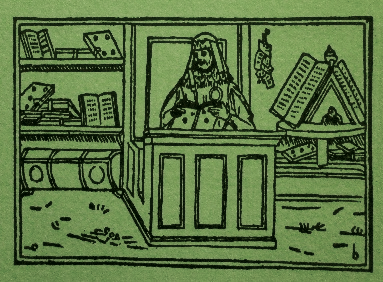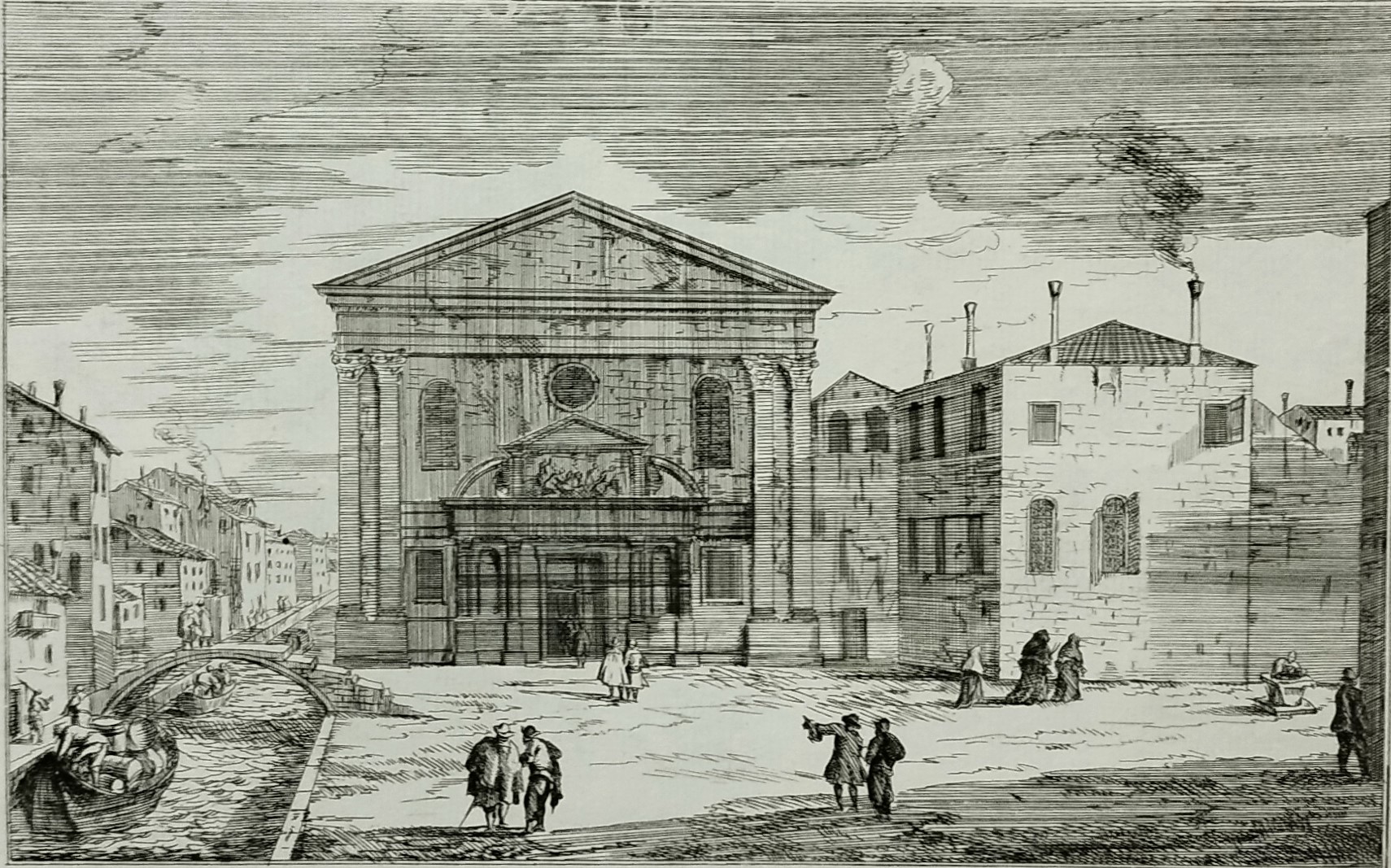Incisione su rame all’acquaforte e bulino di mm 291 x 207 alla battuta, su carta vergellata veneziana. Filigrana fiore e nastro. Secondo stato su tre. Quarta edizione senza indicazioni editoriali. Iscrizioni: “Chiesa di S. Giuseppe Monache Agustiniane a Castello” a destra in basso; “Luca Carlevarijs del. Et inc.” in basso a destra e subito sopra il numero del foglio “18”. Bel foglio privo di difetti, a pieni margini, tratto dalla celebre opera del pittore veneziano “Le Fabriche, e Vedute di Venetia disegnate, poste in prospettiva et intagliate da Luca Carlevarijs”, album composto nella sua edizione conclusiva da 103 vedute. Con questa imponente opera si aprì la grande stagione della vedutistica veneziana del settecento. Il titolo della veduta recita “Chiesa di S. Gervasio e Protasio. Architettura Palladio”. Luca Carlevarijs (Udine, 1663 – Venezia, 1730) figlio dell’architetto e pittore Giovanni Leonardo, appena sedicenne si trasferì a Venezia. Risulta iscritto alla Fraglia dei pittori veneziani dal 1708 al 1713, quindi dal 1726 al 1728 (Favaro 1975). Dominò, con una vasta produzione di vedute e capricci, il mercato veneziano fino al volgere del secondo decennio del ‘700, ovvero finché fu superato dal suo discepolo Antonio Canal. Innovatore nel genere paesaggistico e riconosciuto capostipite dei vedutisti veneziani del Settecento, Carlevarijs rappresentò la sua città d’elezione con fedeltà documentaria, non solo valendosi delle sue cognizioni matematiche nel campo della prospettiva e dell’architettura, o di mezzi meccanici come la camera ottica, ma soprattutto partecipando con più pronta cordialità allo spettacolo della realtà visibile. Realizzò numerose incisioni con vedute di Venezia. Nelle sue acquaforti le linee sono nervose e fluide. La città viene vista riflessa come in uno specchio e la realtà viene vista come un gioco fantastico e variabile. Luca Carlevarijs fu colpito nel 1728 da una paralisi progressiva che lo condusse alla morte il 11 febbraio del 1730. Mauroner (1945). Pittaluga (1952). Succi (1983). Bozzolato (1968). Moschini (1924). (EN) Copper etching and burin measuring 291 x 207 mm at the edge, on Venetian laid paper. Filigree flower and ribbon. Second state out of three. Fourth edition without editorial indications. Inscriptions: “Church of S. Giuseppe Agustiniane Nuns in Castello” on the bottom right; “Luca Carlevarijs del. Et inc.” at the bottom right and immediately above the sheet number “18”. Beautiful flawless sheet, with full margins, taken from the famous work of the Venetian painter “Le Fabriche, e Vedute di Venetia drawn, placed in perspective and carved by Luca Carlevarijs”, an album composed in its final edition of 103 views. With this imposing work the great season of eighteenth-century Venetian landscape painting began. The title of the view reads “Church of S. Gervasio and Protasio. Palladio Architecture”. Luca Carlevarijs (Udine, 1663 – Venice, 1730), son of the architect and painter Giovanni Leonardo, moved to Venice at the age of sixteen. He was registered with the Fraglia of Venetian painters from 1708 to 1713, then from 1726 to 1728 (Favaro 1975). He dominated the Venetian market with a vast production of views and whims until the turn of the second decade of the 18th century, or until he was surpassed by his disciple Antonio Canal. An innovator in the landscape genre and recognized as the founder of eighteenth-century Venetian landscape artists, Carlevarijs represented his city of choice with documentary fidelity, not only making use of his mathematical knowledge in the field of perspective and architecture, or of mechanical means such as the optical camera, but above all by participating with more ready cordiality in the spectacle of visible reality. He made numerous engravings with views of Venice. In his etchings the lines are nervous and fluid. The city is seen reflected as if in a mirror and reality is seen as a fantastic and variable game. Luca Carlevarijs was struck by progressive paralysis in 1728 which led to his death on 11 February 1730. Mauroner (1945). Pittaluga (1952). Succi (1983). Bozzolato (1968). Moschini (1924).
Libreria Emiliana
Antiquaria
Libri e Stampe Veneziane
dal XV al XXI Secolo
dal XV al XXI Secolo


